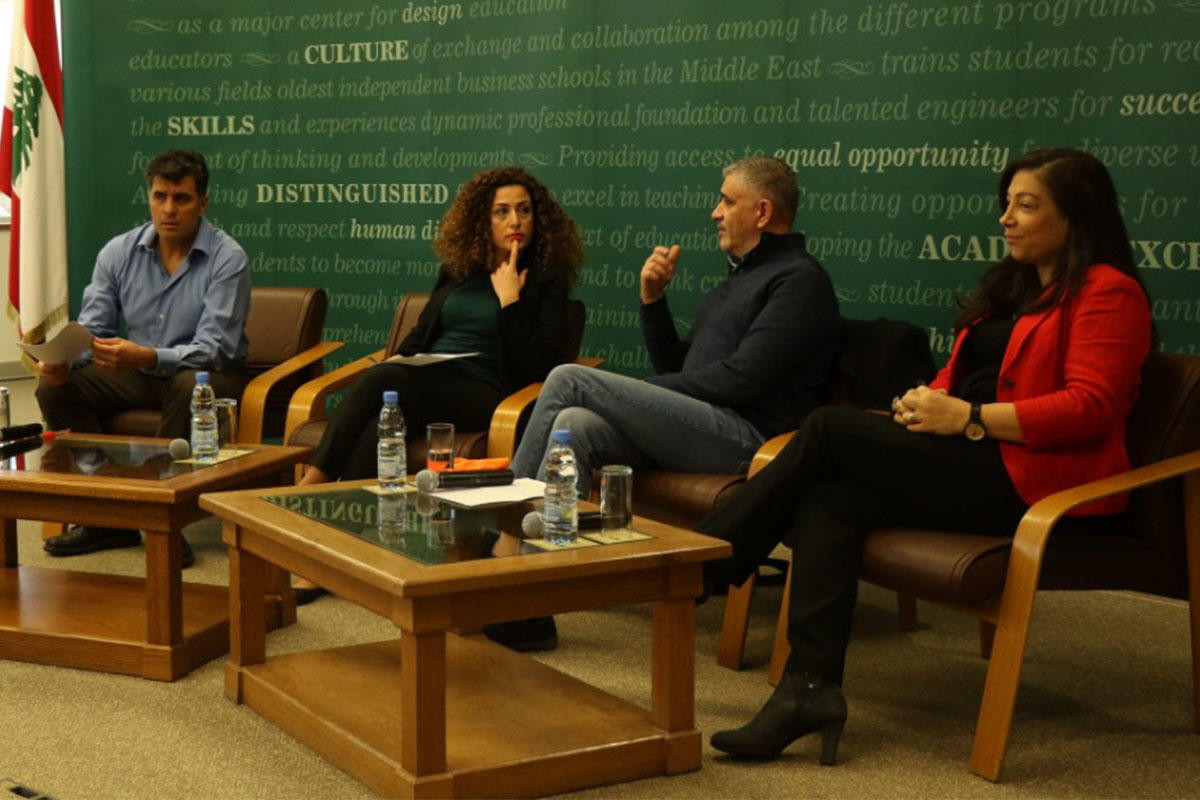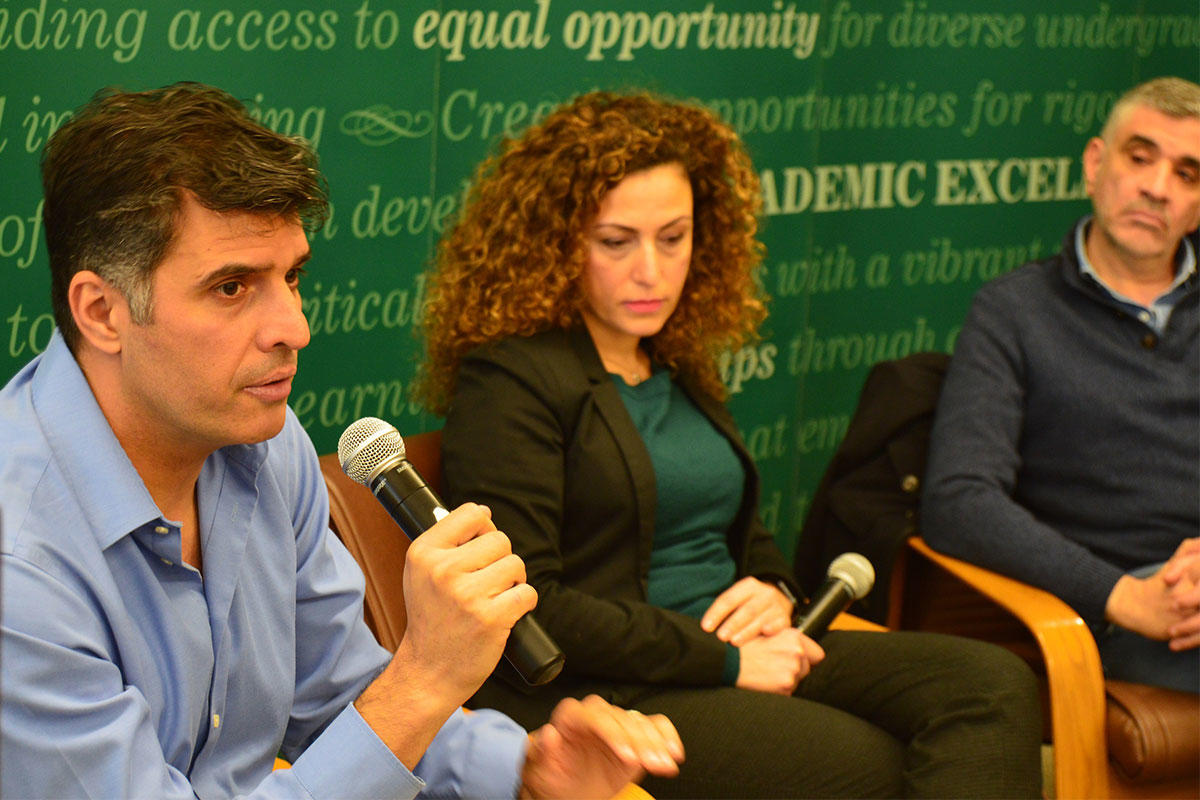LAU Releases Impactful Study on Media Uses and Trust During Lebanese Revolution
The report by the Institute of Media Research and Training surveyed the Lebanese at the height of popular protests about traditional and new media platforms.
Two-thirds (65.3 percent) of Lebanese said they supported the uprising but only about a quarter (27.9 percent) said they actually joined the protests, according to a research study released by the Institute of Media Research and Training (IMRT) at LAU.
The study – Media Uses and Trust During Protests – surveyed a nationally representative random sample of 1,000 Lebanese at the height of the ongoing protests (December 5-12).
According to the findings, released during a press conference at LAU, only 6.2 percent of Lebanese said they have had some media literacy training in their life, and almost half of surveyed Lebanese (46.2 percent) said they were currently unemployed.
The research was conducted by IMRT’s Media/War program and led by IMRT Director Jad Melki and IMRT Research Director Claudia Kozman. It was funded by LAU’s School of Arts and Sciences (SoAS) and the Office of Graduate Studies and Research (GSR).
“This study puts to rest all the rumors about how many people support and oppose the protests, which media stations have been followed or ignored and all the accusations against various Lebanese media,” said Dr. Melki at the press conference.
“It also helps news institutions and journalists to better understand new media habits and better serve their audiences.”
The study was also published in Arabic in Al-Adab Journal, making it accessible to a wider audience.
Al-Adab Editor Samah Idriss, who co-translated a summary of the report, said the significance of this study is “not limited to its findings, but also in the horizons that it opens for future studies.”
In the study, barely any Lebanese said they were members of political parties (3 percent) and that their allegiance to their sect was the most important (3.5 percent). In comparison, almost three-quarters said they were neither supporters nor members of any political party (71.4 percent) and that their allegiance to their country was the most important (72.6 percent).
The study explored which traditional and new media platforms – especially television channels and social media –the Lebanese people mainly accessed and trusted for news about the protests, and which media platforms they mainly engaged with to share news about the protests.
It found that the overwhelming majority of Lebanese followed television for news about the protests, with WhatsApp and Facebook coming in second and third place. Among the television channels, Al Jadeed, LBCI and MTV were the most followed and trusted.
The significance and timeliness of the study lay in the fact that such theoretical frameworks as media uses and selective exposure have rarely been applied to situations of unrest – a matter understudied despite the record number of protests and conflicts globally and the significant role of digital media in instigating, sustaining and propelling them.
“From a theoretical standpoint, this study confirms research about selective exposure, which underlines people’s tendency to expose themselves to media that align with their attitudes,” said Dr. Kozman. “Practically, the results indicate that Lebanese people read and watch media outlets that resonate with their beliefs about the protests.”
As an area plagued by continuous conflict and civil strife, the Arab region is ripe for research on conflict and media effects, which offers a better understanding of how news sources can deliver appropriate content to populations during dangerous and uncertain situations.
This study is part of a larger international project that examines media uses and selective exposure in other parts of the world affected by protests and unrest.
“We plan to release other working papers focused on national data in Iraq, Chile, Iran, France and Hong Kong and then some comparative studies about these countries,” said Dr. Melki. “The overarching goal is to apply theoretical questions and practical media-use questions to unusual situations.”
The press conference also launched a series of research seminars initiated by SoAS, with the aim of engaging the public and students in the research that the school’s various faculties are conducting, said SoAS Dean Cathia Jenainati.
In the same vein, Dr. Jenainati said “the power of the kind of research that IMRT is doing and the kind of research that Communication Arts at LAU is doing is that the end user, the reader, sees themselves in it.”
“The report reflects back to us what our behavior online means and the impact we have every time we send out that little tweet. It shows us that citizen activism is powerful, and we must engage in it.”
The study is part of the ongoing Media/War program, which covers a broad area of research that situates media research within the context of Arab wars, conflicts and politics.

